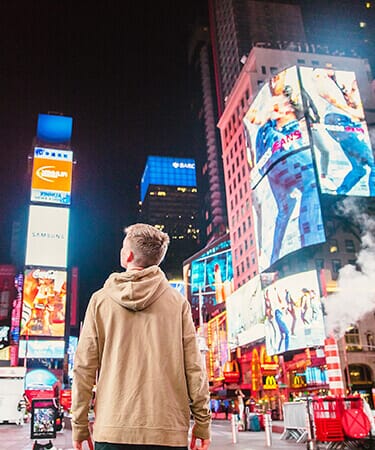Consumers expect more so marketers now serve ads that adapt to exact wants and needs.
From the very first websites hand built in HTML to today’s hyperconnectivity – the last twenty years have certainly been a wild ride. So it’s with great excitement that I’m calling it now. One of the biggest new trends to hit 2017… the dynamic economy.
What is the dynamic economy?
Consumers have never had so much power in who, what, where and when they choose to engage and buy. That’s why brands are spending thousands of dollars on marketing tech (martech) for one reason: to make themselves visible to customers.
The (old) digital economy was defined by information overload. But the new dynamic economy is all about reacting agilely. In other words, in 2017 it’s all about delivering the right message at the right time, to the right audience on the right device. And importantly, it’s about serving ads that change according to the exact wants and needs of your customers.
So the dynamic age is here. How do we get started without breaking the bank?
Digital display optimisation (DDO)
The humble banner ad. Sparking into existence in 1994, it’s been a staple in media plans ever since. But one major flaw remains: once released into the world they’re not quick or easy to alter.
And for brands that means you probably haven’t been able to switch up messaging that’s underperforming as fast as you would like.
Through technology that is becoming less expensive and more readily available, the next 12 months will see marketers changing banner messaging and assets instantly (when already live in market) with messaging that’s backed by the latest insights or business needs. For example, a sale date change won’t require new builds. What’s more, DDO is a fantastic stepping stone to the next cab off the rank – dynamic creative.
Dynamic creative optimisation (DCO)
With the help of a data management platform (DMP), you’ve got more data at your fingertips than ever. This means you can create tailored, relevant, direct, location aware, one-to-one messaging that’s completely device agnostic.
Dynamic creative optimisation (DCO) is the art and science of personalising digital display ads (banners) based on past browsing behaviour of users. And with luck (and a little planning) you’ll use it to convert even more of your users.
Retail has taken this up in a big way in 2015 and 2016 by serving users with imagery and pricing of products they’ve recently viewed (but didn’t purchase) on their websites. The image may be the same (for instance a TV) but the pricing is changed to offer a special discount to entice the user to purchase.
We’re going to see a lot of other businesses getting on-board DCO in 2017. Keep your eyes peeled for dynamic creative in real estate, health, travel and more.
Dynamic personalised video
Say what now? Is that even possible? Yes. Yes it is.
I was first introduced to this technical capability in Q3 of 2016 at a marketing conference (#CMOSydney) and was immediately intrigued… which was kind of the point.
In short with dynamic personalised video, you can use someone’s name, location and known preferences to personalise a video. It’ll give you a whole new spin on video as a communications and marketing tool. In fact, this year you might well receive tailored video messaging in your inbox with offers you won’t be able to ignore.
What does this mean? Let’s pull it all together.
With the rise of the dynamic economy, it’s no longer enough to get a website live or a campaign in market. To stand out, to differentiate, to agitate for a desired customer behaviour, we must now ‘always optimise’ – not just be ‘always on’.
Whether your company has core martech implemented or you don’t have the time or money for a cumbersome enterprise solution, you can still make the dynamic tools coming into play work for you.
As dynamic solutions become more affordable, you too can maximise them to get the competitive edge.




